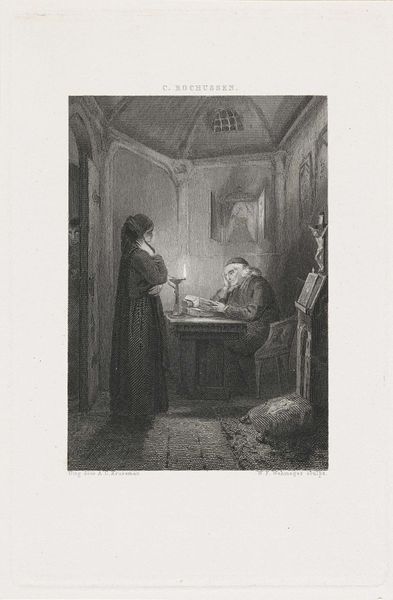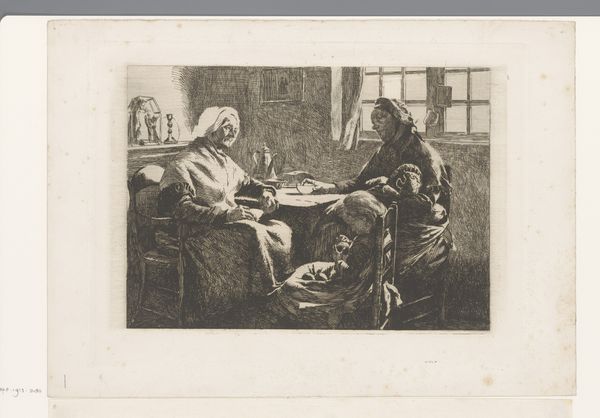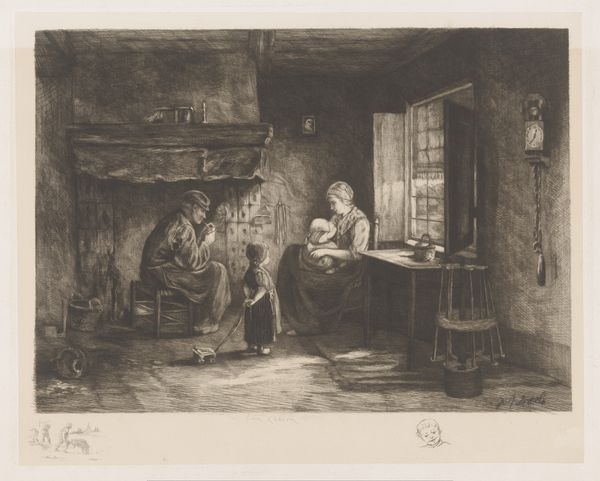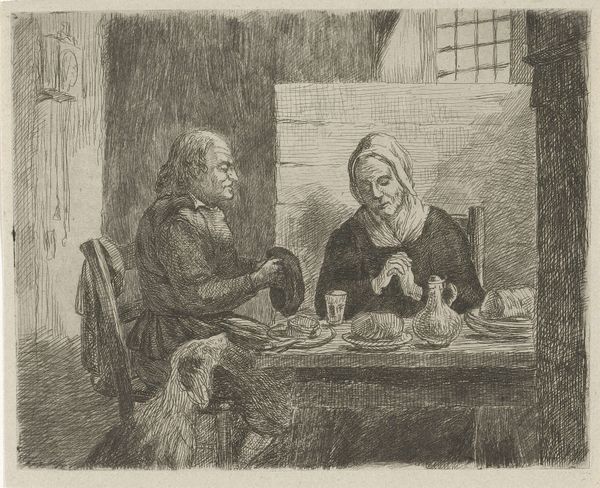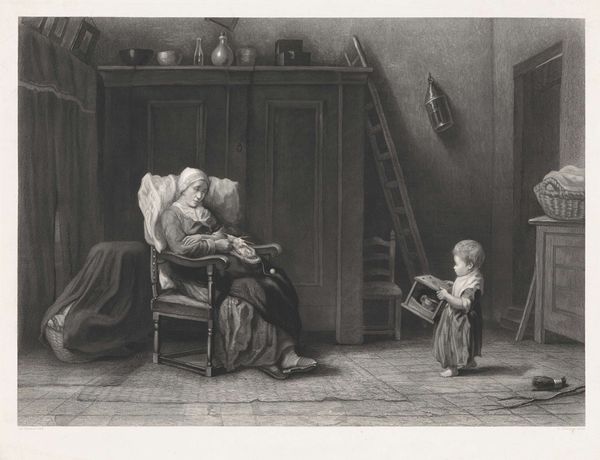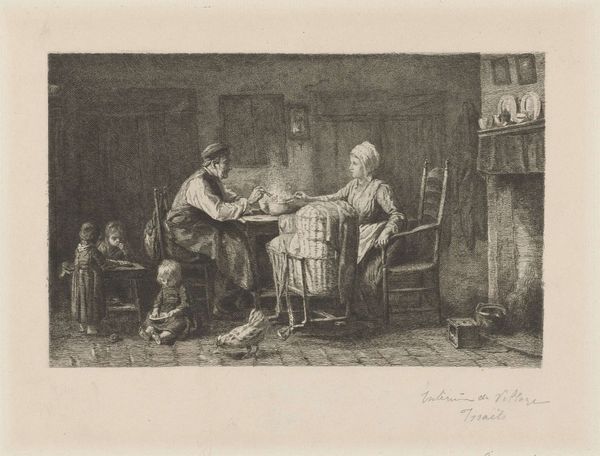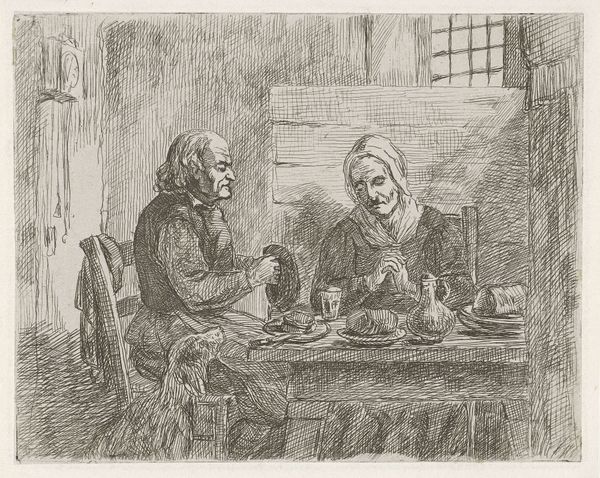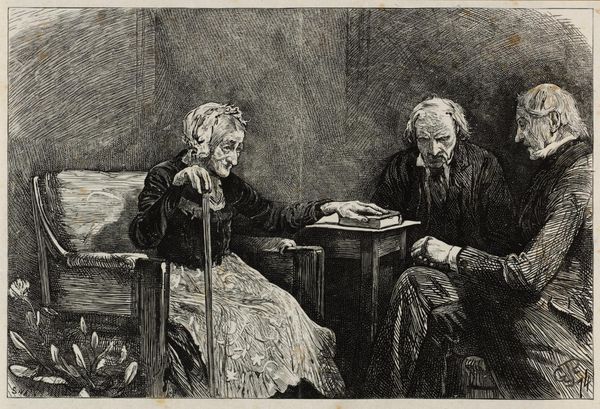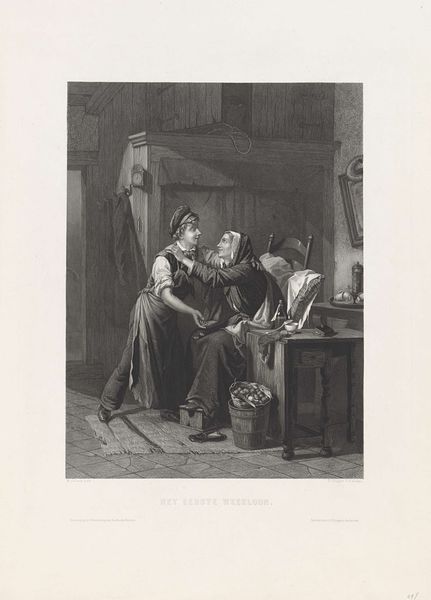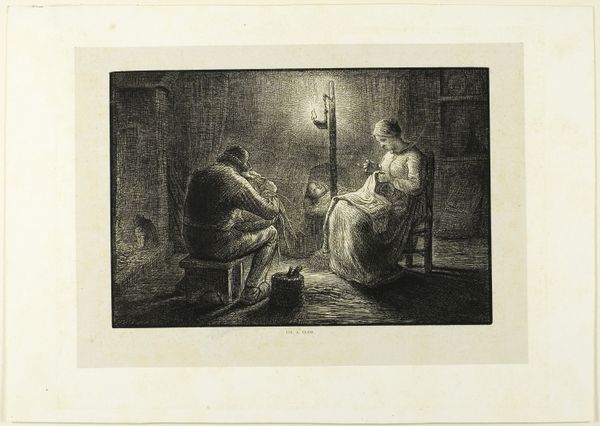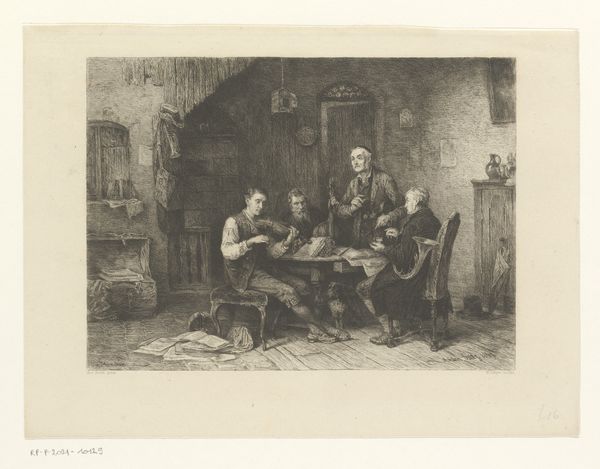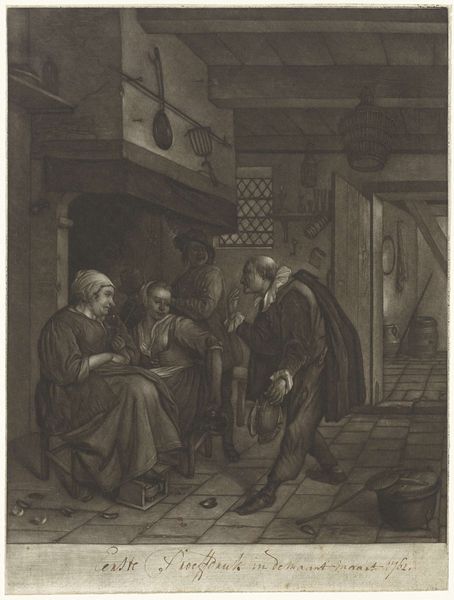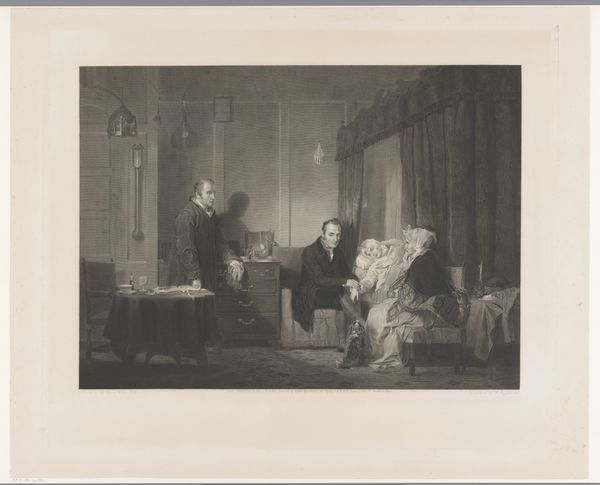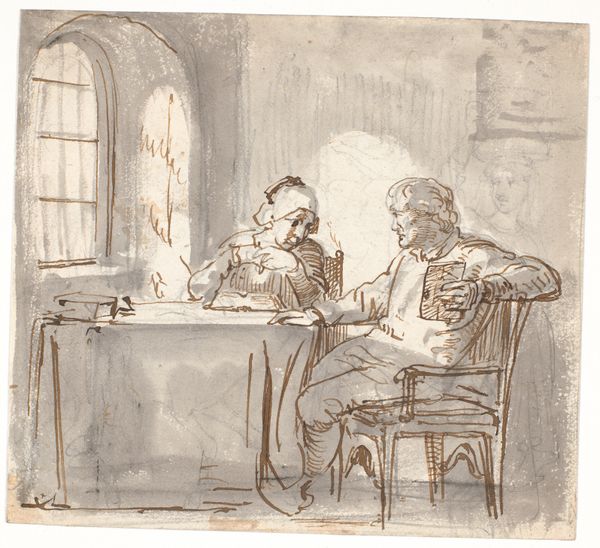
drawing, pencil, graphite, charcoal
#
portrait
#
pencil drawn
#
drawing
#
pencil sketch
#
charcoal drawing
#
pencil drawing
#
pencil
#
graphite
#
portrait drawing
#
genre-painting
#
charcoal
#
graphite
#
modernism
#
realism
Dimensions: height 578 mm, width 740 mm
Copyright: Rijks Museum: Open Domain
Curator: This graphite, pencil, and charcoal drawing by Dirk Jurriaan Sluyter, "Gebed voor de maaltijd", or "Prayer Before Meal," dates to around 1880-1886. It now resides at the Rijksmuseum. Editor: The somber atmosphere is striking. It feels heavy with the weight of unspoken narratives and lived experiences. Curator: Indeed. Observe the meticulous rendering of light and shadow, the artist's masterful control of tonal gradations. The texture of the aged faces and humble interior are meticulously conveyed through the graphite and charcoal. Editor: Right. And it resonates with late 19th-century anxieties regarding tradition and modernity. The stark realism captures the essence of working-class existence, prompting critical reflections on poverty, faith, and familial bonds within specific socio-economic realities. Curator: The composition reinforces a central theme: religious piety. The figures, positioned at the table with heads bowed, evoke quiet contemplation. This can be read formally through the visual construction of this scene; how the receding planes all terminate on a clear focal point of reflection. Editor: And while "genre painting" perhaps understates this scene, it does serve to offer insight into how deeply class, age, and gender are inscribed within social structures. We see labor etched on their faces, quiet fortitude, their shared practice emphasizing community strength in the face of societal indifference. The window is rather dark; do you read that as symbolic of barriers or perhaps as a means of inward reflection away from hardship? Curator: Possibly both. But the attention to linear perspective draws us inward; each chair and floorboard contributes to this rigorous spatial construct, framing this quiet scene, allowing us to read it and consider what it shows about humanity’s formal relationship to God, rather than speculate too heavily on its political dimensions. Editor: Perhaps there’s room for both. These older bodies kneeling for a meal transcend form to reflect and amplify their experience. Thank you, as always, for illuminating my perceptions. Curator: And you, for drawing out a richer, deeper narrative.
Comments
No comments
Be the first to comment and join the conversation on the ultimate creative platform.
